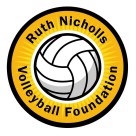

KEITH NICHOLLS INDOOR FACILITIES SPORTS CONSULTANT
Keith Nicholls is a former PE teacher and University lecturer with a passion for volleyball and indoor sports facility design. Through various roles and achievements, he has significantly impacted indoor sports facility design and management in Britain, including changes to recommended sports hall sizes and the successful self-financing and expansion of the Sportspark in Norwich. His expertise and contributions in the intersection of design and management have been recognised through speaking engagements at national and international conferences on sport facility design and management.
As a PE specialist and University lecturer, he has devoted his career to advocating for the advancement of volleyball and the design of indoor sports facilities. His educational journey took him through St Mary's College, London, and Leeds University before returning to St Mary's as a lecturer. In 1972, he made a significant move to Bristol Polytechnic, where he not only obtained loans to construct self-financing squash courts, a fitness centre, and accessible changing rooms but also ensured these facilities were open to the public.
His dedication to volleyball extended beyond mere interest; he played and coached internationally, leading to induction in the Volleyball Hall of Fame. His influence was not confined to the court, as he held various positions within Volleyball England, including the prestigious role of President. In recognition of his lifelong commitment to volleyball, he was honoured with the Peter Wardale Cup, the highest award bestowed by Volleyball England.
The University of East Anglia awarded him a Honorary Fellowship for his significant contribution to sport at the university and in the community.
Not content with leaving his mark solely in the realm of sport, Nicholls directed his attention to the often neglected domain of indoor sports hall design and management in Britain. His efforts led to tangible change, as evidenced in 2011 when he orchestrated the cooperation of multiple sports associations to revise the Sport England recommended dimensions of indoor sports halls. This initiative aimed to better accommodate sports such as volleyball, basketball, badminton, and netball.
Subsequently, his role as a Director of the SE Trust gave him experience of the national Sports Centres, and he also functioned as a contributing member of the Indoor Sports Working Group and Technical Advisor to Volleyball England. In 1990, he was appointed Director of PE & Sport at the University of East Anglia in Norwich, where he devised a comprehensive development plan involving partnerships with local authorities, a school, a Sports Trust, and Sport England. This collaboration culminated in the establishment of new facilities with year-round community access, including two artificial turf pitches and the success of a Lottery bid for the Sportspark. The Sportspark, a large wet and dry indoor complex, was made possible through funding from various stakeholders. www.sportspark.co.uk.
A condition attached to the Lottery award demanded that the Sportspark operate on a self-financing basis without grant support, a challenge that Nicholls embraced. His innovative business model not only attracted over 1.2 million visits annually but also generated a surplus that fuelled the continuous expansion of the Sportspark. This meticulous approach resulted in the creation of additional facilities, turning the Sportspark into one of Britain's largest community sports facilities that continues to operate on a self sustaining basis.
His experience is highly relevant, particularly in the current climate where sports investment requires a blend of increased participation and financial viability. His involvement in any project from its inception promises to marry the crucial elements of design and management effectively. By emphasizing the importance of good design in reducing management costs and the impact of a robust management philosophy in boosting revenue, he underscores the significance of providing affordable access and a diverse range of activities.
With this experience in design and management his expertise has been widely used as a consultant to a wide range of organisations including those below.
Hertfordshire Sports Village, Gelderstone Developments, British Council, Danish Sports Council, Wuhan China 50m Pool, Ruth Gorse Academy Leeds, Luton Council and the universities of Birmingham, Nottingham, Winchester, Warwick, and the Highlands & Islands.
He is happy to meet to discuss your project and suggest ways in which his skills and expertise can be brought to the project.
Areas of consultancy
Concept design validation
Working with the client and architect to map out the requirements, dimensions, and building layout from the management and user perspectives. The aim will be to maximise the activity space available within the budget while providing easy to manage reception, booking and management space.
Review building design
With the client and architect review the detailed design plans before going to tender to ensure they are both efficient and compliant with national standards.
Building the business model and philosophy
Working with the client identity the function of the facility and set the management philosophy. This will guide decision making on marketing, bookings, and pricing strategies. It will take into account the financial requirements of the client and produce a business model that meets both those requirements without compromising sporting participation.
Validating the Business plan
Working with the client to identify gaps and shortfalls in the local market that can provide regular footfall. Identify way of maintaining use across the full year and not just the sporting season. Develop a realistic prediction of usage and link with a pricing strategy. Identify costs particularly a cost effective staffing plan. Review the outturn in relation to the client’s financial budget.
Contact details
Keith Nicholls
216a Unthank Road
Norwich
Norfolk
NR2 2Ah
Tel: 01603 454471
e-mail: Keith Nicholls2@btinternet.com

